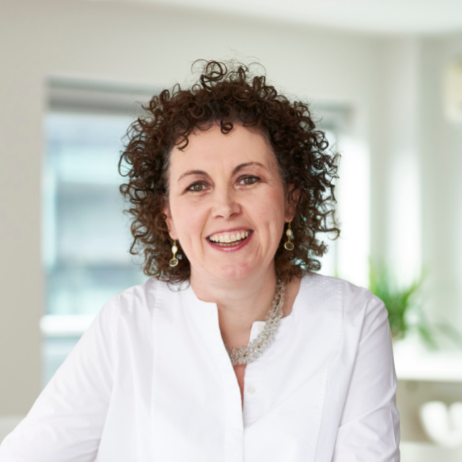“How am I supposed to learn if I feel like this?” - the mental health of our school community
“How am I supposed to learn if I feel like this?” - the mental health of our school community

Catherine Roche
Chief Executive - Catherine began her career in teaching before completing an MBA and joining KPMG. In 1996, her pro bono support for Place2Be inspired her to join the charity as Chief Operating Officer, and then Deputy CEO. In 2014, she became Chief Executive and has driven the organisation’s growth.
Our Chief Executive Officer, Catherine Roche, writes about the mental health of our school community and what the new academic year might bring. This blog was originally published in Children & Young People Now.
Here we are, right in the middle of another busy autumn term, with a new Prime Minister, a new Cabinet and classrooms of children embarking on school for the first time.
New school years are always full of expectation, excitement and nervousness about what lies ahead. Alongside academic achievement, we are keen to see confident, happy faces populating our corridors – and that goes for the staff, too. But how realistic is this, and what can we do to help our children flourish and cope with the stumbling blocks and challenges that life inevitably presents?
The past two, nearly three years have been a rollercoaster for parents, teachers, carers, and students. COVID brought the restrictions of lockdowns, the trauma of losing loved ones, and the uncertainty of: "when will it be back to normal"? This has been against a backdrop of political instability, the war in Ukraine, and a cost-of-living crisis. It makes for quite a shopping list.
We know children and young people are resilient, but it's becoming clear the cost has been dear. Even before COVID, the story of children's mental health was worrying. Still, we are facing a mental health crisis – with 1 in 6 children suffering from mental health conditions and 400,000 being treated monthly, according to the NHS. The Child and Adolescent Mental Health (CAMHS) route for referring more serious cases is bursting at the seams.
Teachers report changes in behaviour, a lack of confidence, difficulty forming relationships and general anxiety amongst the school population. A recent survey we conducted with the National Association of Head Teachers showed that over 86% of school staff noted an increase in low self-esteem among pupils, 72% had seen an increase in self-harm and 76% had seen an increase in depression. Teachers have been feeling the pressure, too, with nearly 90% reporting an impact on their own wellbeing.
The effect on learning is also marked. 86% reported a deterioration in learning and pupil progress, and 87% saw a downswing in behaviour. It was summed up simply by Joseph, a 12-year-old boy leaving Year 6, who said: "Well, how are kids supposed to learn when they feel like this?".
So if the situation is so bleak, what is the Government doing?
Steps have been taken in the right direction. Over the past few years, the Government has implemented its Green Paper programme Transforming children and young people's mental health provision. One element of this programme is the Department for Education's Senior Mental Health Leads Training, launched in 2021. This is a positive development; providing grants for schools to train a key staff member, such as an assistant head teacher, to lead a culture of positive mental health throughout the school. We are one of the providers of this training and welcome it, but it is becoming clear this is not a quick fix. Despite its ambitions, the training is one-off. It focuses on a singular staff member, which, while worthwhile, will not deliver systemic change in the long term.
A second key pillar of the Government's Green Paper programme was the announcement of Mental Health Support Teams. The teams are there to support young people with mild to moderate mental health conditions and provide services to schools. Once again, a positive move. But this will not solve the issue - the teams are forecast to reach only 35% of England on completion. This will leave 65% of students in England alone, out in the cold. The scope is also limited –not catering for the growing number of children with more serious or complex issues, such as suicidal thoughts and self-harm.
It's clear we need a more ambitious plan, and the Government is attempting it. In July this year, the Department of Health and Social Care finalised a consultation on a 10-year strategy for mental health and wellbeing, to which Place2Be contributed. We eagerly anticipate the results, which we hope will point to a clear working together between key departments and a concerted investment in children's mental health. It's evident that a "slowly but surely" approach is not sufficient. We need to see bolder change, and we need it now.
Against the backdrop of these systems and months-long CAMHS waiting lists, the mental health needs of thousands of children are in limbo. Providers such as ourselves at Place2Be are playing an increasingly vital role.
Over the past 27 years, Place2Be has become a centre for excellence for specialist children's mental health support within school communities. We have trailblazed pioneering new techniques, offering world-class training, recruiting passionate individuals, and advocating for change at the highest level.
We are working in partnership with over 450 schools, training thousands of school staff, and reaching a whole school community of 250,000 children and young people through a network of mental health practitioners, counsellors and psychologists.
Our work involves:
- one-to-one counselling support
- targeted group work
- whole-school activities
- helping parents and carers to support children and young people holistically.
Find out more services in schools
Fundamental to our work is developing a whole-school approach. This approach involves everyone, from the headteacher to the canteen supervisor, to be fully alive to mental health and wellbeing, fostering a positive and supportive environment that underpins a child's engagement in learning. A whole-school approach has recently been recommended by the National Institute for Health and Care Excellence (NICE) in their new guideline on mental health in schools.
We now have substantial evidence that early intervention is a key factor in creating emotionally literate, passionate young people who understand their own feelings and can better cope with life’s challenges. Our data shows that specialised support, wider groups and a whole-school approach can dramatically affect young people’s mental health. The support shows to improve attainment, preventing exclusion and keeping families together.
We also know it makes sense financially. To investigate the cost-benefit of our work, we recently undertook a study with Pro Bono Economics, linking childhood mental health and probabilities of certain later life outcomes. We estimated our worth by monetising the economic benefits to society, such as:
- employment
- hourly wage
- depression
- crime
- smoking
- exclusion
- truancy.
The results were staggering - for every £1 spent on our services, £8 was yielded in benefit to society.
Therefore, we can confidently say that investing in children’s mental health and organisations like Place2Be, makes moral and financial sense.
We realise, of course, we cannot do it alone. When Place2Be is in a school, we are integrated into the wider system, with CAMHS, mental health support teams, social workers, family workers, therapists and the local council. These relationships are crucial to us, and we are keen to see more services and professionals based within the school. This is where the children are, which can only make for a smoother and more impactful experience.
The emergence of new Integrated Care Systems, bringing health and social care systems together in local areas, is a positive development. There is a real need for children’s mental health, prevention and early intervention to feature strongly in this work. This major system change presents an important opportunity, and we must make the most of it.
So, where do we go from here?
The future needn't be bleak. This autumn, we embark on an exciting research project with the Law Family Foundation to measure the ‘whole-school effect’ across a group of Salford schools over three years. We believe we can turn the tide on our current situation with proper investment, government buy-in, department collaboration and training of more children’s mental health professionals. Because, building on Joseph’s question, do we have another option?
News & blogs

Uniting health and schools to improve mental health
Read Place2Be Chief Executive, Catherine Roche's, thoughts on uniting health and schools to improve mental health.
Read more
Back to school: breaking down the barriers to attendance
As the school year starts, Place2Be's Educational Psychologist team share interventions to help improve school attendance.
Read more
10 tips for nurturing the wellbeing of LGBTQ+ young people
Place2Be's Plus+ Group shares their tips and advice on how to create safe environments for LGBTQ+ children and young people.
Read more



